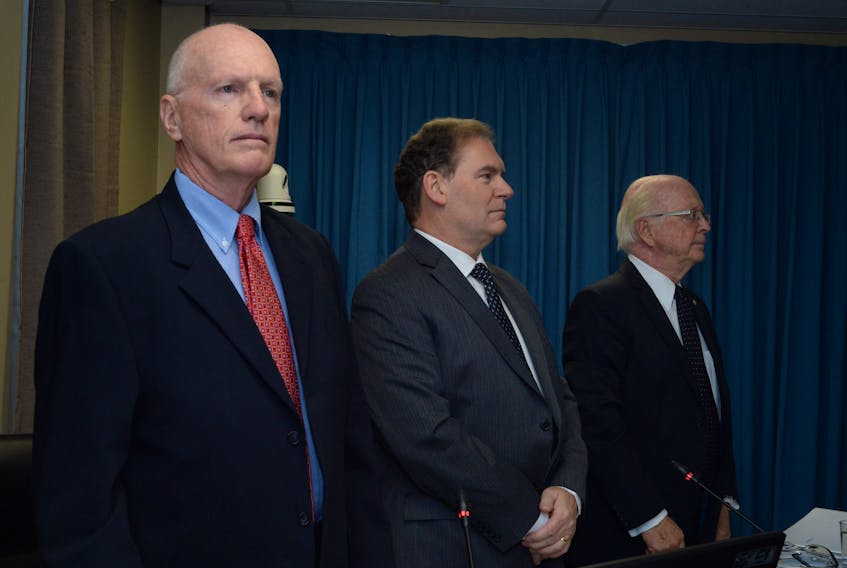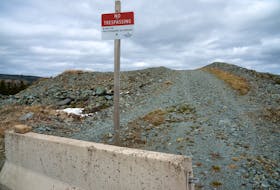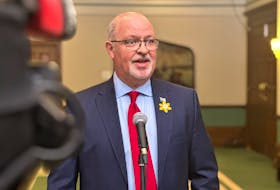The Muskrat Falls hydroelectric project was never given an endorsement by Manitoba Hydro International (MHI) as the all-in, best option for meeting the province’s future energy needs, according to a trio of men who worked on the related reports. That includes an October 2012 report from MHI to the Government of Newfoundland and Labrador.
It doesn’t matter that the final report was used by the province to support a go-ahead in 2012, with excerpts filling a mail-out sent to homes throughout Newfoundland and Labrador. The consultant didn’t say to use it that way.
“We weren’t engaged to study the entire business case for Muskrat Falls,” Paul Wilson said, appearing with Mack Kast and Al Snyder as a panel on Monday at the Muskrat Falls Inquiry.
The trio, with MHI at the time, worked on the “cumulative present worth” (CPW) analysis, looking at the cost of the Muskrat Falls development versus a specific “isolated island” option. That work was undertaken for the Public Utilities Board, then updated under a later contract with the provincial government, as engineering had advanced and new estimates on the project components were made available.
Kast, Wilson and Snyder testified MHI’s work didn’t cover everything Nalcor Energy and the provincial government were expected to consider at the time, before giving a green light to Muskrat Falls.
All three men said they were not aware, for example, of a separate consultant’s report on Muskrat Falls project risks, suggesting to Nalcor Energy the province needed to have about $500 million ($497 million) in additional “strategic risk reserve” at hand if pursuing the Muskrat Falls project. That report was by Westney Consulting.
If the $500 million were included in publicly discussed estimates, the debate around Muskrat Falls at the time would have been on a $6.7-billion project (not including the Maritime Link) instead of $6.2 billion.
Kast, Wilson and Snyder testified it would have been nice to have been made aware of the risk report, but also that the assessment of “strategic risk” fell outside of what they were tasked to do.
“It’s a little disappointing (we weren’t provided the risk report), but we also knew the government was going to assume the responsibility for the risk, strategic risk factor,” Snyder said.
While on the stand, consultant Derek Owen suggested “strategic risk” could have theoretically been in a “management reserve” amount, with public disclosure optional.
Meanwhile, there were half-a-dozen iterations of MHI’s final report to the government before it was finalized and made public. Six is exactly what was suggested by Government of Newfoundland and Labrador lawyer Peter Ralph, as the inquiry tried to figure out the number this week. And Wilson could not say with confidence what the right number would be.
There were revisions along the way, including the removal of reference to MHI’s team not seeing a complete list of detailed cost estimates. Edits to information feeding into the final report showed a reference to “inevitable cost escalation” for contractor labour was dropped, as was a reference to the use of “P50” cost estimates (versus a P70 or P90 figures, being a reflection of confidence level in the estimate).
The final report stated at one point, “The current Lower Churchill Project design, schedules and cost estimates are considered consistent with good utility practice. The design, construction planning, cost estimate and schedule are comprehensive and sufficiently detailed to support a Decision Gate 3 project sanction and cumulative present worth analysis.”
“I don’t recall why we wrote it this way,” Wilson said when asked about the confidence being expressed. He also suggested it was being taken out of context.
There were several points where Wilson had difficulty recalling details of his interactions with representatives of the government and Nalcor Energy, including if he was told to remove or edit certain remarks in the final report. He acknowledged drafts were being put to both and said he did not keep personal notes at the time.
Kast, Wilson and Snyder are expected back on the stand for further cross-examination, redirect and final comments on Tuesday. The three men are not working now for MHI, having moved to new roles in the six years since the Muskrat Falls review report.
RELATED STORIES:
Movement of information becomes issue at Muskrat Falls Inquiry
Auditors bring Muskrat Falls as ‘best option’ into question









